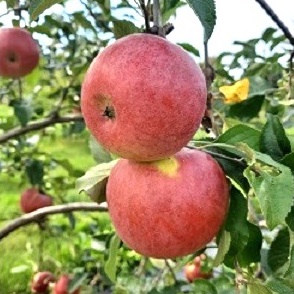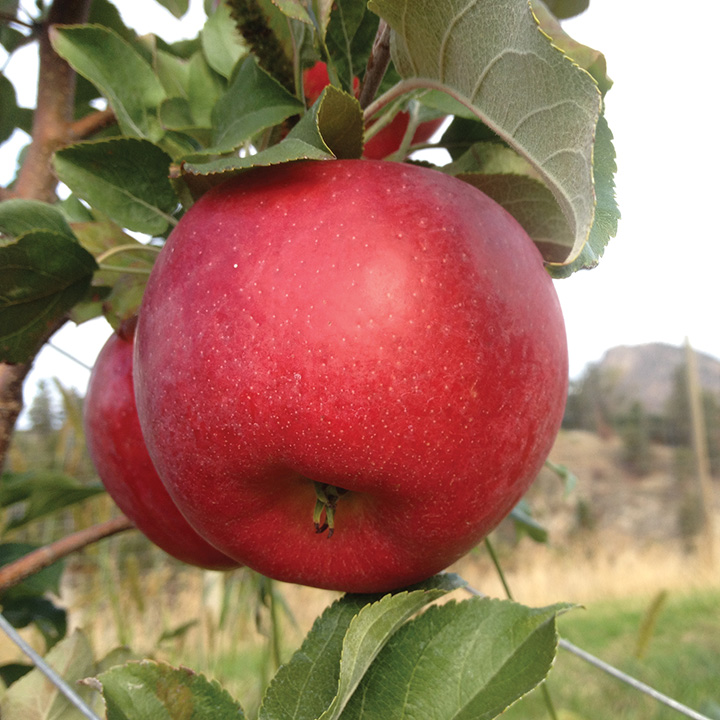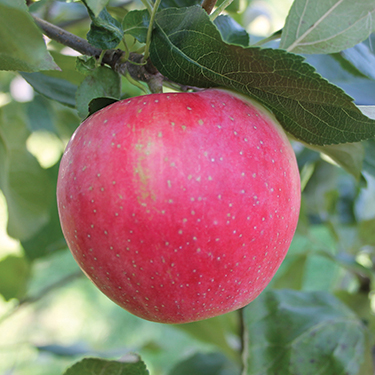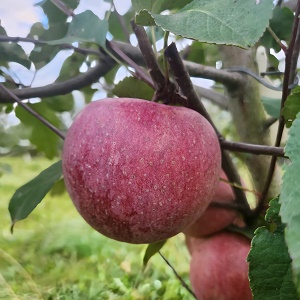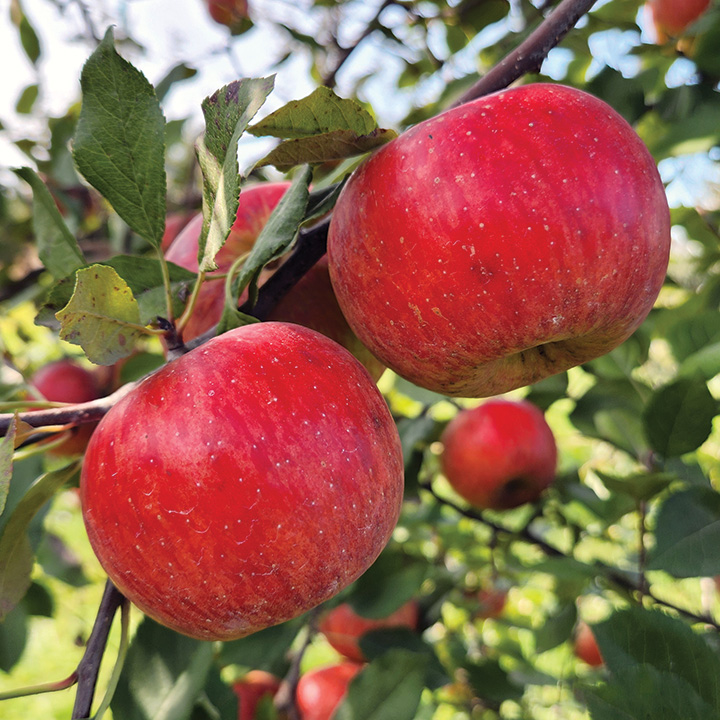Apple : NOVA EASYGRO Large Semi-Dwarf (B118) (Orchard Grade)
$37.95
An 'orchard grade' is a tree that may be somewhat shorter, slightly crooked, or a bit scratched, or for some other reason is not a perfect front lawn specimen. These trees will work just as well in an orchard as a first or number one would, since they still produce the very same fruit.
We consider this selection from Kentville, Nova Scotia to be the ideal replacement for Cortland. It is slightly sweeter, every bit as hardy and, best of all has no scab problems. Large, reddish apples with firm, snow-white flesh will mellow and even improve in storage. An all around good eating and cooking apple which keeps till well after Christmas.
NEEDS A POLLENIZER | ZONE 3 | HARVEST: MID OCT.
Growing Tips
Besides selecting the most disease resistant varieties, there are
a few simple things to do to have better apples.
- Fertilize under the outer edges of your trees. There are no feeder roots next to the trunk. A well fed tree stays healthier. (Adequate calcium in the soil also helps so that apples keep longer.)
- Pick up fallen fruit and compost, dispose of, or feed to livestock (where possible).
- Rake up leaves in the fall and compost them away from the orchard.
- Prune trees to encourage light and air to reach the inside of the tree.
- Provide bird nesting sites near your orchard. A variety of orchard companion type plants will attract native pollinator insects and also encourage birds to come and eat insect pests.
